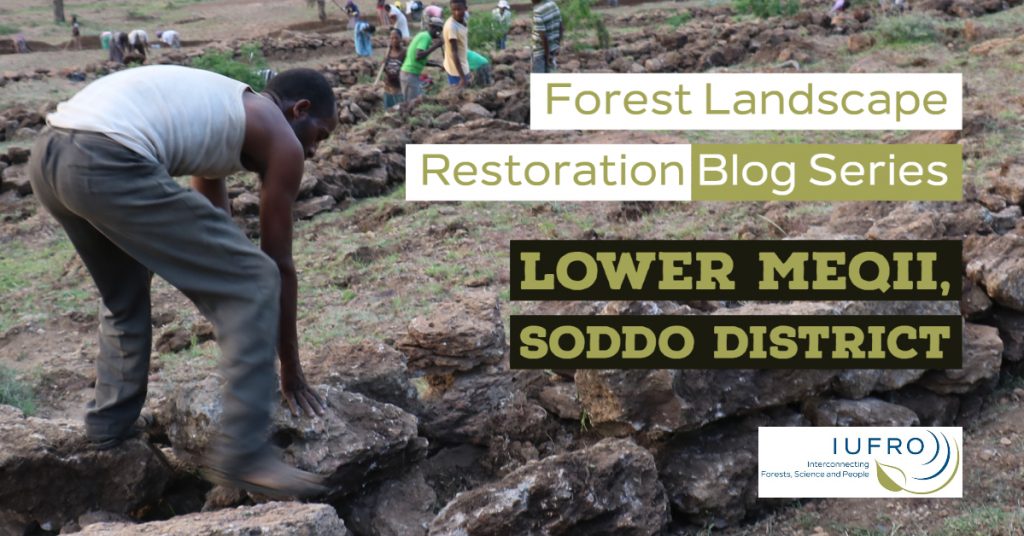We are now in the Sub-Saharan African country Ethiopia, “land of origins”, meaning origin of humankind, Arabica coffee, blue Nile, and many more. In the seventh blog post, the name of the restoration project is Ethiopia’s Landscape Restoration at Lower Meqii (Dugda area), Soddo district.

A participatory approach
The government was the responsible for initiating and guiding which activities should be implemented in the initiative, consulting the local communities at the grass root level. The project focused on soil and water conservation for successful forest landscape restoration (FLR), integrated native trees in agroforestry combination, and planted fast growing exotic and native trees with the participation of local communities. The project introduced fruit trees in the formation of agroforestry systems for food security.
The lower Meqi restoration project initially wanted to restore on a large-scale simultaneously but it was not manageable due to the limited budget, vast land area, and man power.
Facing challenges and learning from past experiences
In previous situations, about 700-1000 farmers were mobilized at one location to work on restoring a watershed, resulting in inefficiencies and consequently poor work quality. In addition, people used to travel long distances to contribute to building and restoring watersheds. In the current scenarios and reflecting about past experiences, the lower Meqi project was restricted to mobilizing a limited number of people to work at certain localities and incentives were made available to promote productive labor.
Positive attitudes through joint learning
Stakeholders, including local communities learned through the FLR process that restoring landscapes and thereby increasing their productivity is possible. The FLR process successfully introduced new technologies, such as bench terraces that were readily embraced by local communities.
Ethiopia has committed with 15 million ha by 2020 to the Bonn Challenge – a global effort to bring 150 million ha of the world’s deforested and/or degraded areas into restoration by 2020 and 350 million ha by 2030.
Coming up next…
Brazil: Agroforestry systems: a landscape restoration strategy to landowners in the Brazilian Amazon.
To find out more about Ethiopia, watch their interview on the side-event Forest Landscape Restoration Implementation: Progress on the Ground during the XXV IUFRO World Congress 2019.
Download the poster: https://www.iufro.org/science/special/spdc/netw/analysis/
Check out the other countries to know more about forest landscape restoration.

Leave a Reply